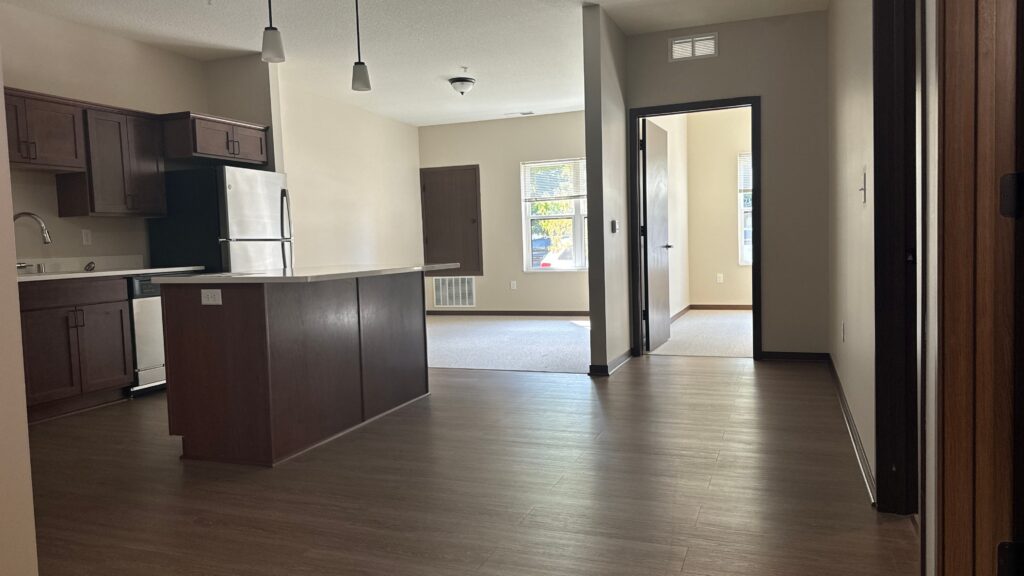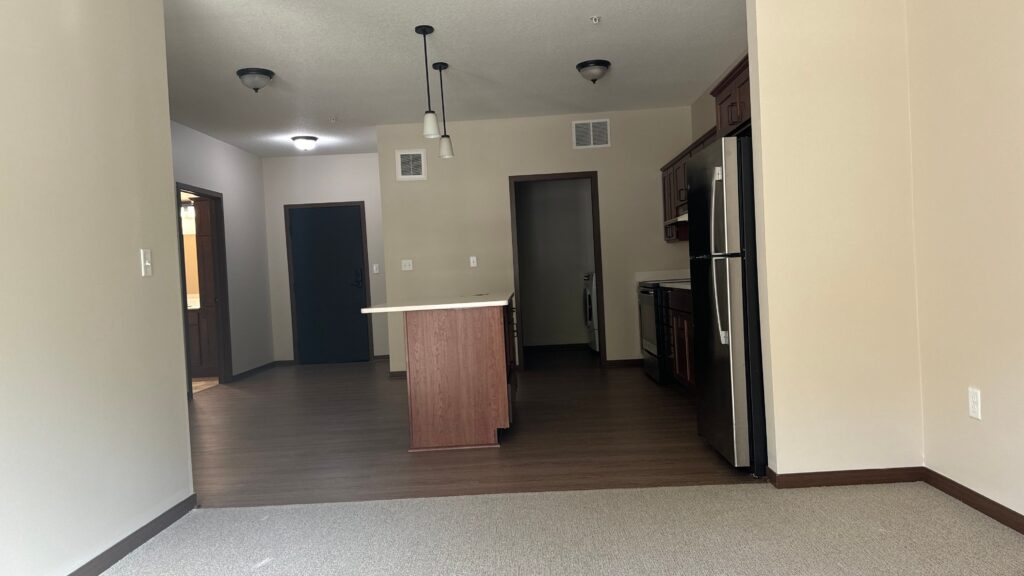Introduction
Does your room feel cramped? The good news is paint can fix that! The right colors and techniques can transform a small space into an open, airy retreat. Interior house painting isn’t just about color—it’s about creating an illusion of space.
With the right approach, you can make your home feel larger, brighter, and more inviting without expensive renovations. Many homeowners struggle with small rooms that feel tight and uncomfortable. Strategic painting techniques are the secret to making these spaces feel more expansive.
Whether you want a brighter living room or a more expansive bedroom, the right paint tricks can make all the difference. Let’s explore the best techniques to make small rooms look bigger using bright Minneapolis’s interior painting strategies.
1. Choose the Right Colors

A. Light Colors Work Best
Light colors reflect natural and artificial light, instantly making a room feel larger. Dark shades absorb light and make walls close in, making the space feel more enclosed. Choosing the right shade can drastically impact a room’s perception of size.
Best color choices:
- Soft whites and creams – These create a clean, fresh look.
- Light grays and beiges – These neutral tones are stylish and versatile.
- Pale blues and greens – These provide a soothing atmosphere while maintaining brightness.
Use light-colored furniture and decor that blend seamlessly with your walls to maximize the spacious effect. Avoid bold or dark hues unless they are used as accents.
B. Stick to Cool Tones
Cool colors create a calming effect and push walls outward, making the space airy and expansive. Shades of blue, gray, and green work best for small rooms because they create the illusion of depth and openness.
C. Monochrome Magic
Using different shades of the same color creates a seamless look that prevents visual clutter. It removes harsh contrast, making walls appear farther apart. Instead of separating the space with multiple colors, opt for a monochrome palette to maintain a cohesive and spacious feel.
2. Use Paint to Create Depth
A. Accent Walls with a Purpose
Adding an accent wall can create the illusion of depth and dimension. A well-placed accent wall draws the eye forward, expanding the space visually. However, the key is choosing the right location and color.
Best placement for an accent wall:
- The wall is farthest from the entrance, which makes the room seem longer.
- Behind a bed or sofa – Creates a strong focal point without overwhelming the room.
- A wall with windows – Enhances the perception of natural light and space.
B. Ceiling Tricks
Ceilings impact how large or small a room feels. A bright white ceiling instantly makes a room feel taller by reflecting light. If you want to add even more height, paint the ceiling a subtle tint of the wall color. This technique softens the transition between walls and ceilings, making the entire space feel larger.
For an even greater illusion of height, try adding vertical stripes or a glossy finish to the ceiling to reflect light upwards.
C. Blending Trim and Walls
Traditional trim is often painted white, which can create a stark contrast that chops up the space visually. Instead, painting the trim the same color as the walls removes visual barriers, allowing the eye to travel freely. This creates a smooth, uninterrupted flow, making the space feel larger and more open.
3. Choose the Right Paint Finish
A. Gloss vs. Matte
Glossy finishes reflect light, making walls seem farther away. A satin or eggshell finish is ideal for small rooms, as it adds a soft, subtle sheen without overwhelming the space. Too much gloss can create unwanted glare, while completely matte finishes make a space feel flat and dull.
B. The Perfect Balance
For small rooms, balance is key. Different surfaces require different finishes to maximize space perception:
- Ceilings: Semi-gloss or satin to enhance brightness and reflectivity.
- Walls: Eggshell or satin for a soft, light-reflecting effect that’s not too glossy.
- Trim & Doors: Semi-gloss for durability and subtle contrast while keeping the design cohesive.
4. Painting Techniques That Add Space
A. Vertical Stripes for Height
Stripes aren’t just for fashion—they work wonders in home design, too! Vertical stripes draw the eye upward, making ceilings seem taller. Use soft, neutral stripes for a subtle yet effective illusion for the best results.
B. Horizontal Stripes for Width
Want to make a narrow room feel wider? Horizontal stripes guide the eye from side to side, visually stretching the space. This works well in hallways and narrow bedrooms.
C. Ombre Walls for Depth
Ombre painting creates a gradient effect, fading from dark to light. This technique makes walls appear to recede, adding depth and dimension to a room. It’s an excellent option for homeowners looking for a trendy and artistic way to enhance small spaces.
5. Bonus: Smart Design Tips to Enhance Paint Effects
Painting is just one part of the equation. Pair it with smart design choices to maximize space perception.
A. Mirrors Amplify Light
Mirrors reflect both natural and artificial light, doubling the effect of bright walls. Place a large mirror opposite a window to enhance brightness. This trick works exceptionally well in compact living rooms and hallways.
B. Minimal Furniture Keeps Things Open
Too much furniture makes a small room feel cluttered. Stick to essential pieces and opt for sleek, space-saving designs that enhance movement and openness.
C. Light-Colored Decor Blends with Walls
Dark, bulky furniture can make a room feel heavy. Lighter-toned furniture blends seamlessly with the walls, maintaining an open feel. Transparent or glass furniture pieces also help in keeping the space airy.
D. Sheer Curtains Let in More Light
Heavy, dark drapes absorb light and weigh down a room. Instead, choose sheer or light-filtering curtains to keep the space bright and open, making the windows appear more prominent.
Why Hire Professional House Painters in Minneapolis?

While DIY painting is possible, hiring house painters in Minneapolis ensures flawless results and better longevity. Here’s why professional help makes a difference:
A. Perfect Application
Professional painters achieve smooth, even coats without streaks or drips. They know the best primers, finishes, and techniques to maximize space perception while maintaining durability.
B. Expert Color Selection
Are you unsure which shade will work best? Painting companies in Minneapolis offer color consultations to help you choose the perfect palette for your space and lighting.
C. Saves Time & Effort
Painting a room takes time, patience, and proper prep work. Pros handle everything from surface preparation to cleanup, so you can sit back and enjoy the transformation hassle-free.
Conclusion
Small rooms don’t have to feel small. With the correct interior house painting in Minneapolis, you can create the illusion of space and openness. Light colors, reflective finishes, and clever paint tricks can transform any cramped area into a stylish, airy retreat.
Ready for a change? Contact professional house painters in Minneapolis today and give your home the fresh, spacious look it deserves!


